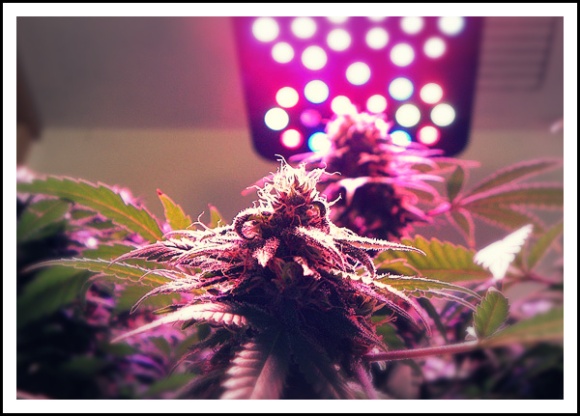
So, you’ve managed to grow your own weed, congratulations! You’ve been growing your plant for several weeks now, and you’re anxious to clip what look like decent buds, but how do you really know your plant is ready for harvest? Well, no worries. All it requires is careful observation. Here are two basic ways of determining the optimum time to harvest marijuana.
1. The Easy Way
The easiest way to determine whether your plant is ready to harvest is to simply look at the plant. In particular, you want to look at the white hairs, or pistils, that cover the plants buds. As the plant matures and the flowering period comes to an end, the white hairs which initially stick out straight begin to darken and curl. You don’t want to start harvesting until more than half the hairs have darkened from white to amber in color. Buds will have their highest level of THC when between 50% -70% of the pistils have darkened. Harvest at this time for more of a psychedelic head high.
You can still harvest your plant when 70%-90% of the pistils have darkened. As your plant matures further, THC breaks down and oxidizes from exposure to air. As this happens the plants chemistry changes, making for a more calming, sleepy, body high.
2. The Precise Way
For a more accurate method of determining the ideal time to harvest, you will need to look at trichomes. In particular, you’ll be looking at the color and clarity of those trichomes. Trichomes are tiny, glandular, outgrowth on the leaves and buds of your plant. They often have stalks and a bulbous head, looking similar to a mushroom. The sticky resinous coating you’ll see on the trichomes is where the THC and other psychoactive components are stored. To get a good look at them you will need to invest in a Jeweler’s loupe/magnifying glass of 30x-60x.
Take a close look at the trichomes with your magnifying glass. Clear colorless trichomes are an indication that your bud is not quite ready yet. When your trichomes are more opaque or milky in appearance then you should start to get excited. But don’t harvest until most of the trichomes are milky. This is when THC is at its peak. For the most potent buds, with the most psychoactive effects, harvest when most of the trichomes are cloudy. Eventually the trichomes will turn amber or gold in color. Some strains will even turn purple or red. If you Harvest when most trichomes have changed from milky white, to one of the colors I have just mentioned, you will get more of narcotic, stoney, body high. However, your plant has past its ideal harvesting period when more than 75% of your trichomes have darkened.

